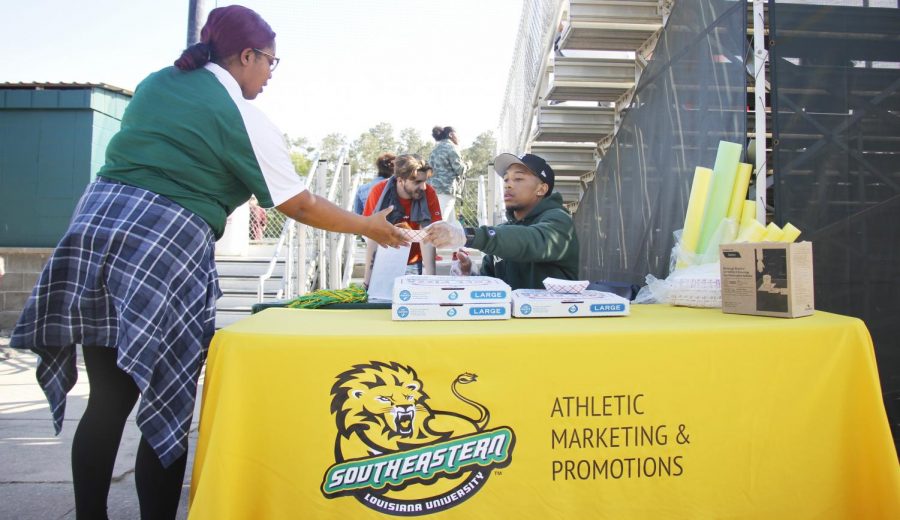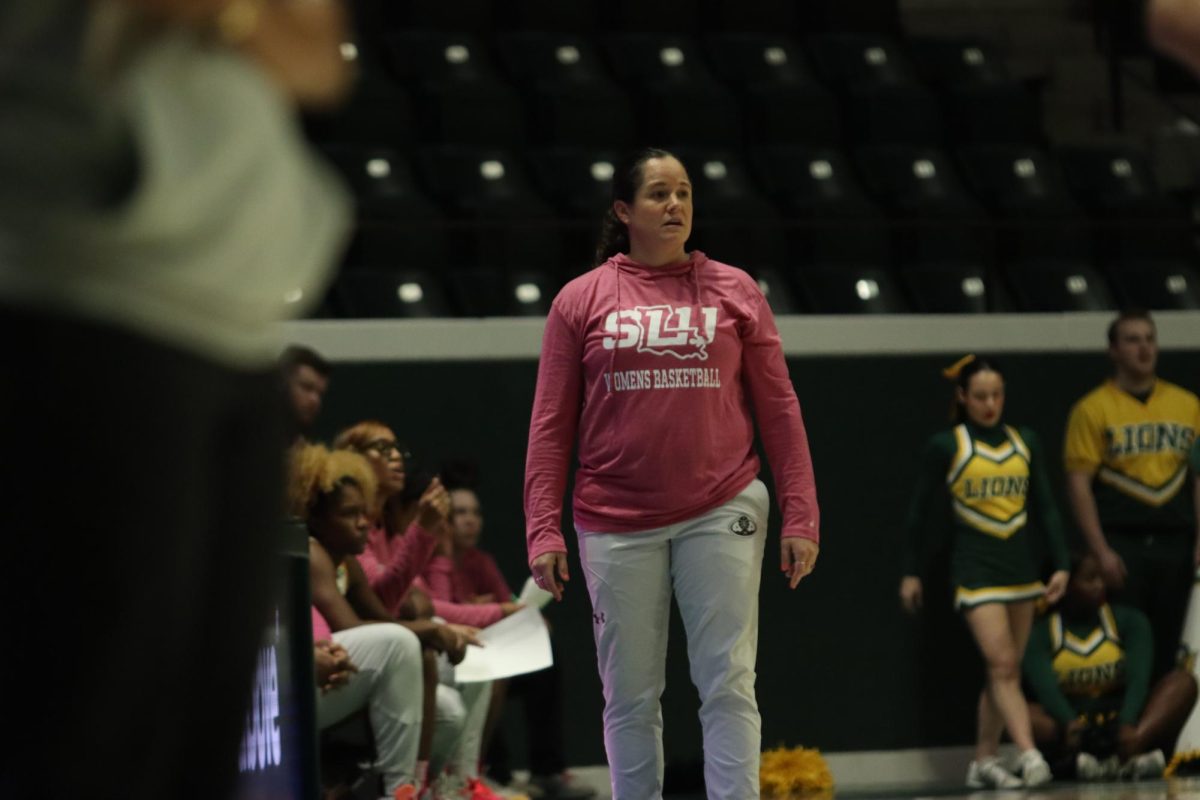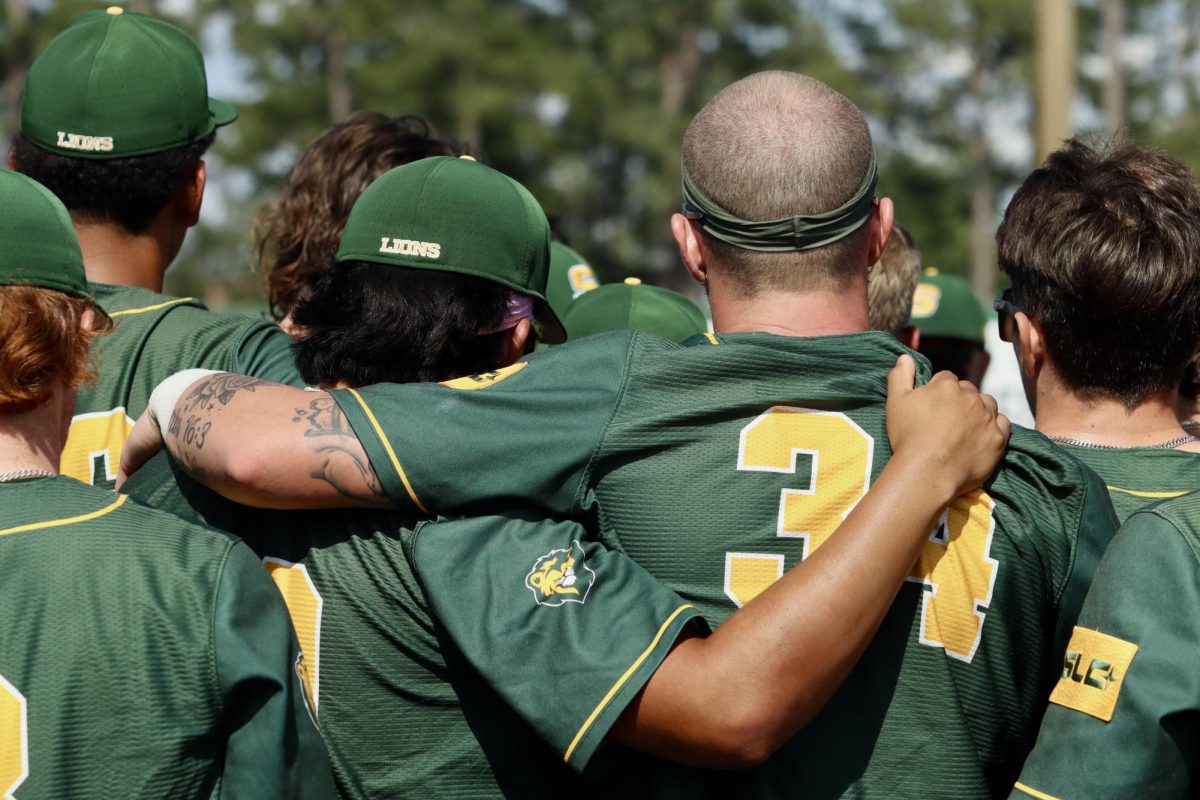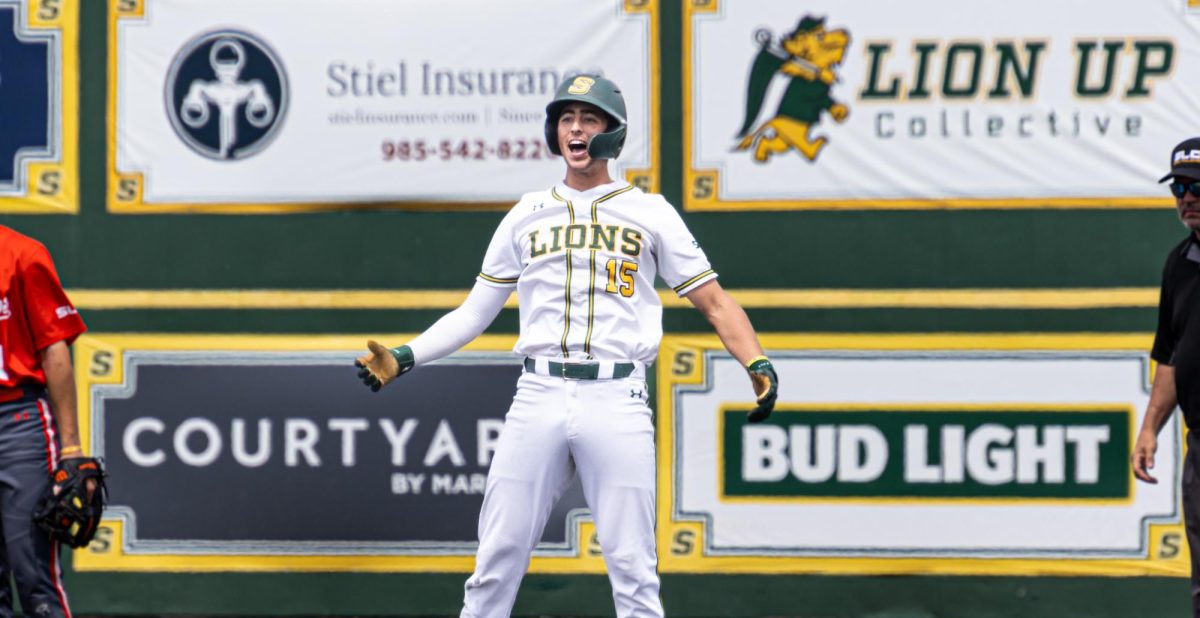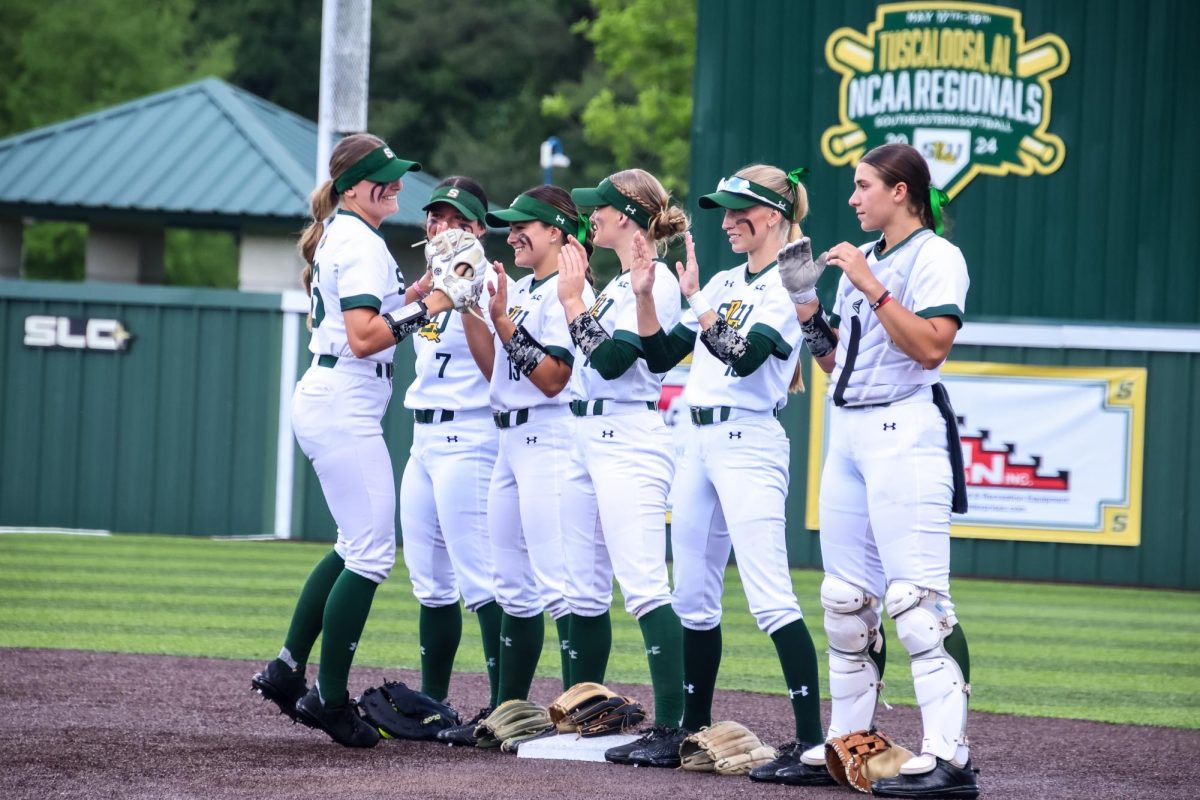Devising new or improved ways to get community members attending and supporting games falls under the authority of Athletics Marketing and Promotions.
Even though “Strawberry Jam” and “Full Court Fest” may be among the department’s most popular promotions, the group’s work does not end there.
Lindsey Owens, director of athletic marketing and promotions, explained why their task is fundamental in the athletic department.
“When we have fans, we have a following, and that’s an all-around positive piece of the puzzle,” shared Owens. “The importance of having fans is what makes sports what they are – a hobby or experience for passionate people. When the stands are full, it’s what makes ‘home field advantage’ advantageous. It’s fulfilling for our athletes, coaches, athletic personnel and university as a whole to have a following and passionate fan base.”
Sarah Taylor, a public relations specialist for Meridian Group, recognized that engaging with fans is key in athletics marketing in her 2016 article titled, “Seven Ways to Engage Fans and Drive Ticket Sales in Athletic Business.”
“With a thoughtfully crafted campaign, sports teams can build relationships with fans and keep their stands full even while competing with the wide variety of entertainment options at fans’ fingertips,” said Taylor.
For Owens, the real challenge in athletics marketing is more about engaging with people who are not in interested in sports.
“The realest challenge is trying to appeal to those who say, ‘I don’t like sports. I don’t care about football, baseball, tennis, soccer or whatever other sport’ and turning them into a fan based off of the experience alone,” said Owens. “In that moment, you already have someone who is going against the flow, but we work hard to cater to those instances and show them that it’s so much more than understanding how many quarters are in a football game or the amount of sets are in a volleyball game.”
Owens explained what it feels like when a promotion she creates is successful.
“It’s so fulfilling to see it pay off,” stated Owens. “A lot of the time my staff and myself are so indulged in organizing and operating the event that we don’t get to see it come to fruition 100%.”
Owens has learned what methods do not work.
“The methods that don’t work are those that you need immense buy-in for,” shared Owens. “The methods that require a lot of depth are difficult as well. For instance, if we’re making this really neat web page or interactive event where it requires fans or students to do a more than average amount of work, clicking, reading or searching, it’s probably not going to be effective. With technology, you have to be quick. Get the audience’s attention and give them the information to interpret.”
In her article, Taylor further discussed that technology, like social media, can be a turn-off depending on the demographic of fans.
“Social media is a great tool, but more traditional means of engagement such as email and print campaigns should be incorporated as well,” said Taylor. “For example, a large portion of season-ticket holders are older, and social media may not be the best tactic to reach them.”
To keep her campaign from relying too heavily on social media, Owens wants experience with advertising in local television channels to reach a broader range of people.
“It’s important that we love our community here in Hammond, but also to let those people on the southshore, Baton Rouge and outlying areas know we want their support on game day,” explained Owens. “We try to make it worthwhile in a positive game day experience and family atmosphere.”


